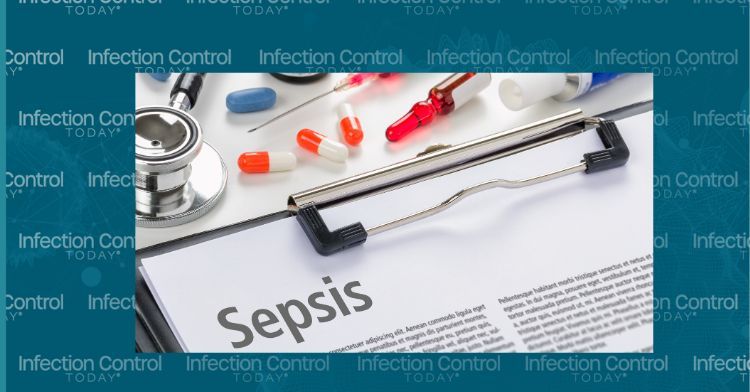Acetaminophen in Sepsis: A Recent Study Examines Efficacy and Safety
A recent study published in JAMA discusses the efficacy and safety of acetaminophen in sepsis patients.
Sepsis
(Adobe Stock FILE #: 110860650 By Zerbor)

Sepsis, a life-threatening condition resulting from the body's response to infection, is a significant challenge in critical care medicine. Acetaminophen (paracetamol) has been studied as a potential treatment for sepsis due to its ability to inhibit cell-free hemoglobin-induced oxidation of lipids and other substrates. This property could be beneficial in reducing organ dysfunction.
A recently conducted Phase 2b randomized, double-blind clinical trial published in JAMA, “Acetaminophen for Prevention and Treatment of Organ Dysfunction in Critically Ill Patients With Sepsis: The ASTER Randomized Clinical Trial,” aimed to determine whether intravenous acetaminophen administration could increase the number of days alive and free of organ support in patients with sepsis compared to placebo. The trial, conducted from October 2021 to April 2023 with a 90-day follow-up, enrolled adults with sepsis and respiratory or circulatory organ dysfunction from 40 US academic hospitals.
The authors wrote, “Treatment of critically ill patients with sepsis with either respiratory or circulatory organ dysfunction with 1 g of acetaminophen intravenously every 6 hours for 5 days was safe but did not significantly improve the primary outcome of days alive and free of organ support to day 28, including mechanical ventilation, vasopressors, and kidney replacement therapy.”
The trial's primary endpoint was the number of days alive and free of organ support to day 28. Secondary endpoints included various clinical outcomes such as ventilator-free days, vasopressor-free days, and mortality rates at 28 and 90 days. Safety outcomes were also assessed, including hepatic injury markers and adverse events.
Results from the trial, involving 447 enrolled patients, indicated that while intravenous acetaminophen was safe, it did not significantly improve the primary outcome of days alive and free of organ support compared to placebo. There were no notable differences in mortality rates between the acetaminophen and placebo groups. However, several secondary outcomes showed promising trends, with patients receiving acetaminophen demonstrating lower rates of acute respiratory distress syndrome (ARDS) development and improvements in certain components of the Sequential Organ Failure Assessment (SOFA) score.
“In observational studies, receipt of acetaminophen was associated with improved survival in critically ill patients with sepsis with elevated plasma cell-free hemoglobin and in a large, critically ill, medical and surgical cohort,” the authors wrote.
Among 15 secondary outcomes, the total, respiratory, and coagulation SOFA scores were significantly lower on days 2 through 4 in the acetaminophen group, as was the rate of development of acute respiratory distress syndrome within 7 days (2.2% vs 8.5% for acetaminophen vs placebo; P = .01; difference, −6.3; 95% CI, −10.8 to −1.8).
The trial also explored the potential predictive value of baseline plasma cell-free hemoglobin levels, a biomarker associated with sepsis severity, in determining acetaminophen's efficacy. While there was no significant interaction between hemoglobin levels and treatment outcome, posthoc analysis suggested a potential treatment benefit in patients with higher baseline hemoglobin levels.
Despite these findings, the trial had limitations, including its moderate size for a Phase 2 study and the limited power to examine heterogeneous treatment effects. Additionally, the study drug was administered for a shorter duration than initially planned due to concerns about its hemodynamic effects.
While intravenous acetaminophen was safe for use in critically ill patients with sepsis, it did not significantly improve survival or reduce the need for organ support compared to placebo. However, the observed trends in secondary outcomes warrant further investigation, particularly regarding the potential predictive value of plasma cell-free hemoglobin levels in guiding acetaminophen therapy in sepsis management.
This study underscores the complexities of sepsis treatment and the need for continued research to identify effective therapeutic strategies that can improve patient outcomes in this critical condition.
Newsletter
Stay prepared and protected with Infection Control Today's newsletter, delivering essential updates, best practices, and expert insights for infection preventionists.
Reducing Hidden Risks: Why Sharps Injuries Still Go Unreported
July 18th 2025Despite being a well-known occupational hazard, sharps injuries continue to occur in health care facilities and are often underreported, underestimated, and inadequately addressed. A recent interview with sharps safety advocate Amanda Heitman, BSN, RN, CNOR, a perioperative educational consultant, reveals why change is overdue and what new tools and guidance can help.
New Study Explores Oral Vancomycin to Prevent C difficile Recurrence, But Questions Remain
July 17th 2025A new clinical trial explores the use of low-dose oral vancomycin to prevent Clostridioides difficile recurrence in high-risk patients taking antibiotics. While the data suggest a possible benefit, the findings stop short of statistical significance and raise red flags about vancomycin-resistant Enterococcus (VRE), underscoring the delicate balance between prevention and antimicrobial stewardship.
What Lies Beneath: Why Borescopes Are Essential for Verifying Surgical Instrument Cleanliness
July 16th 2025Despite their smooth, polished exteriors, surgical instruments often harbor dangerous contaminants deep inside their lumens. At the HSPA25 and APIC25 conferences, Cori L. Ofstead, MSPH, and her colleagues revealed why borescopes are an indispensable tool for sterile processing teams, offering the only reliable way to verify internal cleanliness and improve sterile processing effectiveness to prevent patient harm.
The Next Frontier in Infection Control: AI-Driven Operating Rooms
Published: July 15th 2025 | Updated: July 15th 2025Discover how AI-powered sensors, smart surveillance, and advanced analytics are revolutionizing infection prevention in the OR. Herman DeBoard, PhD, discusses how these technologies safeguard sterile fields, reduce SSIs, and help hospitals balance operational efficiency with patient safety.
Targeting Uncertainty: Why Pregnancy May Be the Best Time to Build Vaccine Confidence
July 15th 2025New national survey data reveal high uncertainty among pregnant individuals—especially first-time parents—about vaccinating their future children, underscoring the value of proactive engagement to strengthen infection prevention.